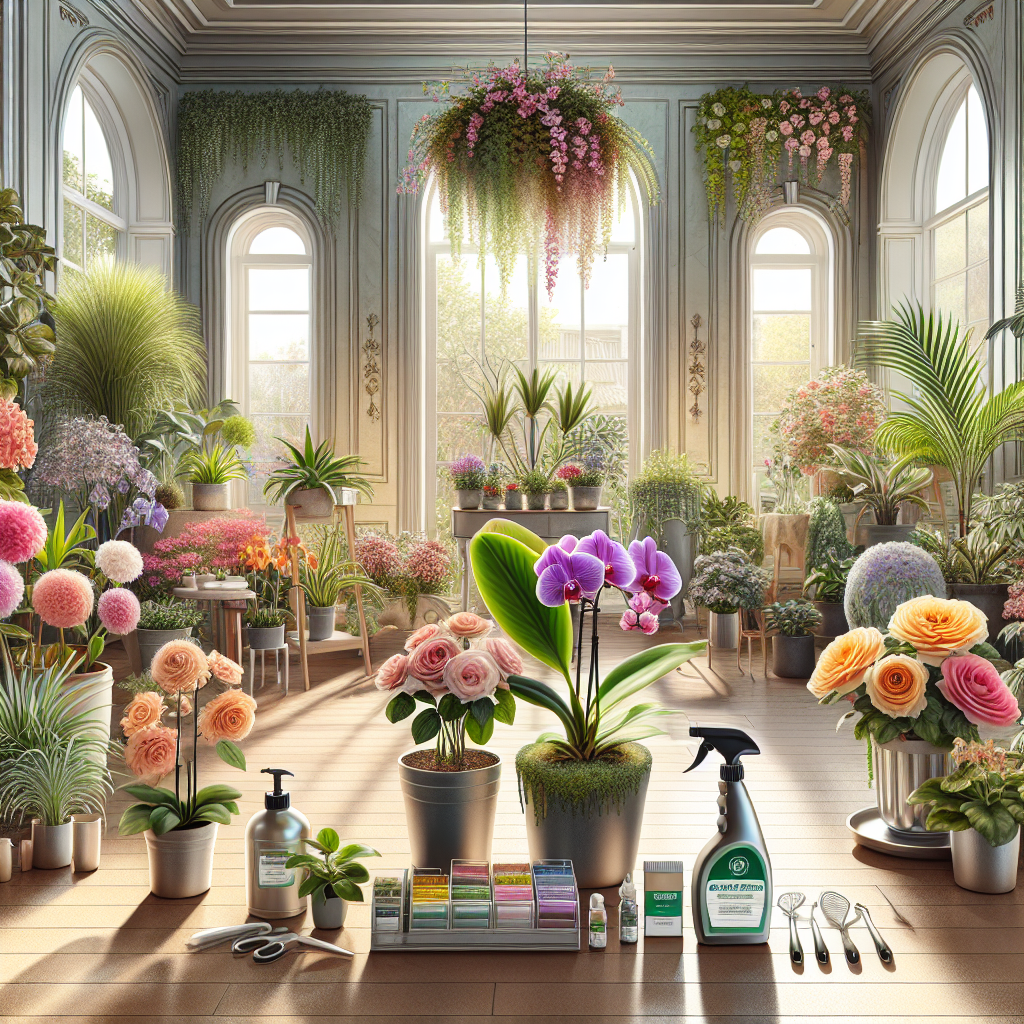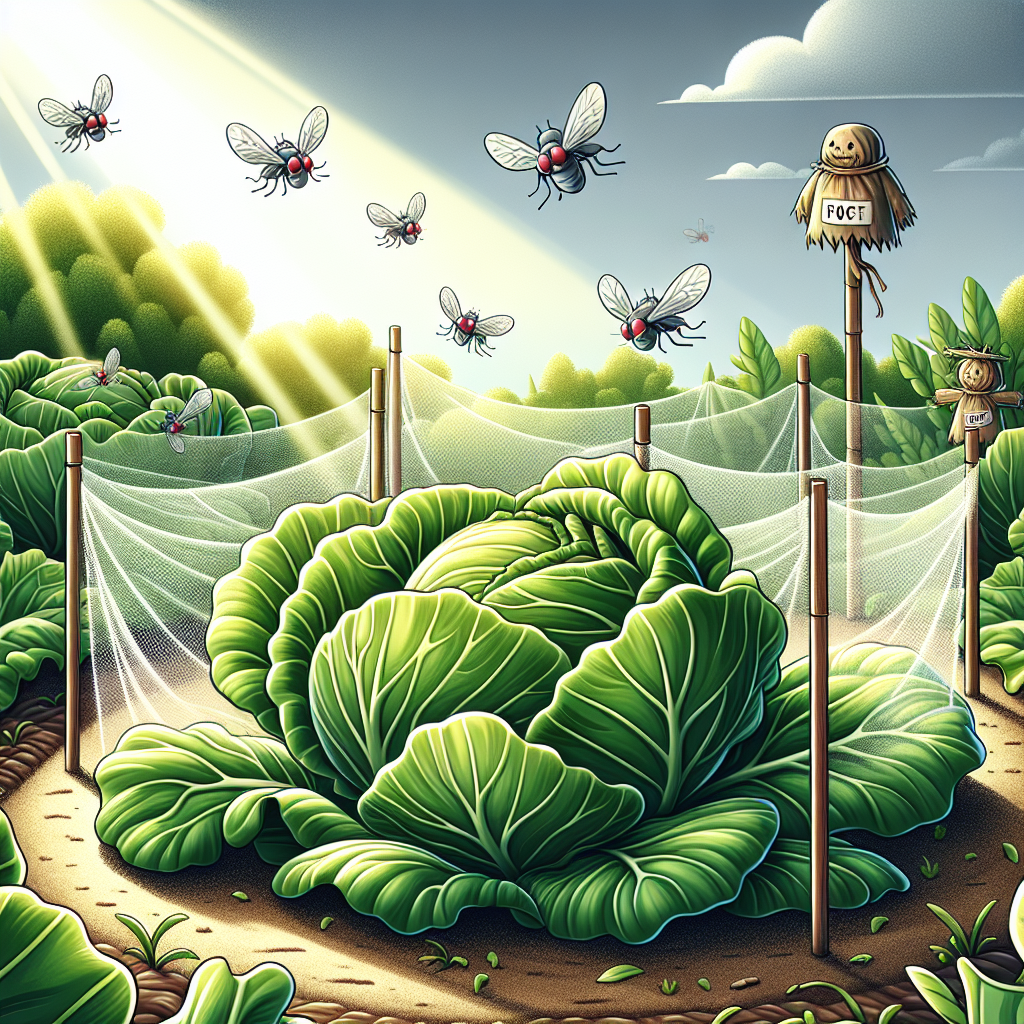How to Encourage Blooming in Indoor Flowering Plants
Updated November 30, 2024 at 6:18 pm

Understanding Your Indoor Flowering Plants
- Pet Friendly
Some plants can be toxic to pets. It’s essential to choose non-toxic varieties if you have curious cats or dogs that might nibble on your greenery. African violets and Christmas cacti are examples of pet-friendly flowering plants that add beauty without the worry.
- Light Requirements
Indoor flowering plants typically enjoy bright, indirect light. Southern or eastern exposure is ideal for encouraging blooms. Some flowering plants, such as peace lilies, can tolerate lower light levels, but will thrive and bloom more prolifically with more light.
- Watering
Watering needs vary, but most indoor flowering plants require consistent moisture. However, it’s just as important not to overwater, as soggy soil can lead to root rot. A general rule of thumb is to water when the top inch of soil feels dry to the touch.
- Humidity
Many flowering plants, like orchids or gardenias, come from humid environments and will benefit from higher humidity. A plant humidifier, pebble tray, or regular misting can help replicate these conditions indoors.
- Temperature
Flowering plants generally prefer stable temperatures ranging from 65 to 75 degrees Fahrenheit. Keep plants away from drafts, sudden temperature changes, and direct heat sources to prevent stress that could inhibit blooming.
- Difficulty
Difficulty levels can range from easy-to-care-for African violets to the more fussy gardenias. Choose plants that match your horticultural skill level and time commitment to ensure a rewarding experience with your flowering plants.
Selecting the Right Fertilizer to Boost Blooms
Choosing the proper fertilizer is pivotal for getting abundant and vibrant blooms from your indoor plants. Flowering plants usually require a fertilizer high in phosphorus as it supports bud and flower development. Look for a fertilizer ratio where the middle number (phosphorus) is higher than the other two, such as a 15-30-15 blend.
A popular choice among gardeners is the Miracle-Gro Water Soluble Bloom Booster Flower Food. This product has received praise for its ability to bring life to flowering plants, encouraging full blooms and vibrant colors. Gardeners appreciate the ease of use – simply mix it with water and apply to your plants every 1-2 weeks.
While reviews are generally positive, some users advise caution with the application rate, as using too much can lead to fertilizer burn. To get the best results, always follow the recommended guidelines on the packaging.
Pros
- Boosts flowering with high phosphorus content
- Easy to use water-soluble formula
- Can be applied every 1-2 weeks
Cons
- Overapplication can harm plants
- Not organic, if that’s a preference
Find This and More on Amazon
Pruning and Deadheading for More Blooms
Pruning and deadheading are critical practices to encourage more vibrant blooms. By removing dead or fading flowers (deadheading), you signal the plant to produce more blooms instead of using energy to make seeds. Regular pruning helps train the plant’s energy towards the healthiest buds and stimulates new growth.
For tools, the Fiskars Micro-Tip Pruning Snips are often recommended for their precision and ease of use when it comes to deadheading or light pruning. These snips are designed with a spring-action mechanism which reduces hand fatigue, and their sharp blades make for clean cuts without damaging the plants.
User reviews often highlight the durability and comfortable grip of these pruning snips. However, some advise that they may not be suitable for thicker stems, making them ideal for more delicate indoor flowering plants.
Pros
- Sharp, precision blades perfect for delicate tasks
- Spring-action design reduces hand strain
- Non-slip grip for comfort during prolonged use
Cons
- Not suitable for cutting thick stems
- Blades may need frequent sharpening with heavy use
Find This and More on Amazon
Optimizing Light Exposure for Healthy Flowers
Managing sunlight is essential when it comes to indoor plant care. Even though many indoor flowering plants prefer bright, indirect light, each species has its own requirements. For example, anthuriums bloom with glossy, heart-shaped flowers when they get filtered, bright light, but too much direct sunlight can scorch their leaves. To mimic natural light conditions, you might consider investing in grow lights, especially during darker months.
A well-regarded option is the Roleadro LED Grow Light, which has earned favorable reviews for its full spectrum capabilities, mimicking sunlight to support the full cycle of plant growth. It’s said that people particularly value the balance of blue and red lights, aiding in both vegetative growth and promoting blossoms in flowering plants. Meanwhile, some note the need to carefully monitor plants for signs of light burn, as even artificial lights can be powerful.
Pros
- Full spectrum mimics natural sunlight
- Energy-efficient LED technology
- Supports both vegetative growth and flowering
Cons
- Potential for light burn if not monitored
- May require additional units for larger plant collections
Find This and More on Amazon
Creating the Perfect Soil Mix for Flowering Plants
The right soil mix could mean the difference between a flourishing plant and one that struggles. Flowering plants generally prefer well-draining soil that can hold enough moisture to sustain growth but prevents waterlogging. For those who might not want to mix their own soil, pre-made mixes are available and widely used by indoor plant enthusiasts.
FoxFarm Ocean Forest Potting Soil is a fan favorite for its nutrient-rich blend, providing a good balance for water retention and drainage. It’s said that this soil has helped users to green their thumbs, with reports of their indoor flowers blossoming lavishly within a short period after repotting. However, it’s important to note that this particular soil mix might be too nutrient-rich for some delicate plants, which could require a lighter mix.
Pros
- Rich in organic nutrients
- Good water retention with proper drainage
- Ready to use straight out of the bag
Cons
- May be too strong for sensitive plants
- Price point is higher than some other mixes
Find This and More on Amazon
Importance of Proper Watering Techniques
Effective watering is more than just a routine; it’s an art. To avoid the pitfalls of over or under-watering, consider using self-watering planters or soil moisture meters for a more precise approach. With these tools, you can better gauge the needs of your plants and adjust your watering schedule accordingly.
The Aquaphoric Self Watering Planter is touted for delivering consistent moisture without the guesswork. Users commend its ability to keep soil at an optimal moisture level, which is particularly helpful for those who tend to overlove their plants with too much water. That said, some reviewers suggest being cautious with highly water-sensitive plants, as even self-watering systems can retain more moisture than some plants might like.
Pros
- Ideal for consistent soil moisture
- Reduces the risk of over and under-watering
- Convenient for busy individuals
Cons
- Might retain too much moisture for some plant types
- Refilling the water reservoir requires monitoring to prevent neglect
Find This and More on Amazon
Managing Pests and Disease
Your flowering houseplants can fall prey to pests and diseases, which can significantly hinder their ability to bloom. Proactive monitoring for signs of distress such as discoloration, spots on leaves, or visible pests can help you address issues before they escalate. For preventative care and treatment, natural pest control options like neem oil are immensely popular.
Organic neem oil products, like the Garden Safe Neem Oil Extract, are highly recommended for their effectiveness in combating a broad spectrum of indoor plant pests, such as aphids and spider mites. Users love it because it’s a natural and safe option for their plants, pets, and family. Despite its benefits, some users suggest diluting it properly, as full strength applications could be too potent for tender foliage.
Pros
- Natural and safe for indoor use
- Effective against a wide range of pests
- Can also help prevent fungal diseases
Cons
- Needs proper dilution to prevent potential leaf burn
- The smell can be strong and unpleasant to some
Find This and More on Amazon
The Role of Regular Repotting
It might seem counterintuitive, but sometimes, for a plant to bloom, it needs to go through the stress of being repotted. As flowering plants grow, they may become root-bound, where their roots have filled up the container, leaving no room for expansion. Repotting into a slightly larger pot with fresh soil can provide the nutrients and space needed for the plant to continue growing and blooming.
When selecting a new pot, look for something that’s just one size larger than the current one. Too large of a pot can lead to water retention issues, which can harm the plant. The process of repotting also offers a chance to examine the root system for any signs of disease or decay, which could be affecting the plant’s health and ability to bloom.
A product that can assist with repotting is the Bloem Ariana Self Watering Planter. This planter is specifically designed to keep excess water at the bottom of the pot, away from the roots, preventing root rot and encouraging healthy growth. Its built-in reservoir allows for less frequent watering, maintaining more consistent soil moisture which is key for newly transplanted plants. According to user reviews, plants seem to establish quicker in this planter, although some users noted that it’s essential to follow the instructions carefully to ensure the self-watering feature works properly.
Pros
- Prevents root rot with a bottom reservoir
- Self-watering feature for consistent moisture
- Available in various sizes to accommodate growing plants
Cons
- Requires careful reading of instructions for proper use
- Not as decorative as some other planter options
Find This and More on Amazon
Mimicking Seasonal Changes Indoors
Some flowering plants are prompted to bloom by changes in seasons, which can be hard to replicate indoors. Plants might require cooler temperatures or shorter day lengths to cue blooming. This might mean relocating your plant to simulate a change in environment, such as a cooler room in the fall or reducing the amount of artificial light it receives.
An important tool for this strategy is a programmable timer switch for your plant lights. These can help mimic natural light cycles by automatically turning the grow lights on and off at specific times. The BN-LINK 7 Day Programmable In-Wall Timer Switch is favored by many plant enthusiasts for its reliability and ease of programming. Reviews note that it’s an excellent way to enforce a consistent light schedule, crucial for inducing flowering in some plant types. It’s often mentioned that reading the installation instructions carefully will ensure the best performance from this product.
Pros
- Allows for precise control over light cycles
- 7-day programming for custom schedules
- Can accommodate natural changing seasons
Cons
- Installation may be intimidating for some
- Requires understanding plant-specific lighting needs
Find This and More on Amazon
Incorporating Companion Planting
What’s often discussed in outdoor gardens can also apply indoors – companion planting. While space is more limited indoors, carefully selecting and placing companion plants together can help enhance growth and blooming. For instance, some plants can improve the air quality or increase humidity levels, creating a better microenvironment for flowering plants to thrive.
Companion plants can also be a natural way to deter pests, reducing the need for chemical treatments. However, be mindful about the water, light, and soil needs when grouping plants together to ensure they are compatible and won’t negatively impact each other’s health.
Establishing a Consistent Care Routine
Lastly, patience and consistency are often the key to seeing your indoor flowering plants bloom. A plant that’s been neglected might take some time to show results, even after you start giving it the attention it needs. Establish a regular care routine, observe how your plants react to different treatments, and adjust accordingly. Over time, your care and patience will pay off with beautiful blossoms.
A tool that can help establish this routine is a digital plant care tracker app. Many plant enthusiasts use them to keep a log of their watering, fertilizing, and pruning schedules. While there are numerous options available, the Vera by Bloomscape app is widely appreciated for its intuitive interface and helpful reminders. Reviews often say that Vera has helped them become more attentive to their plant’s needs, leading to better overall plant health and more frequent blooming.
Remember, success with indoor flowering plants often comes down to attention to detail, being observant, and responding to the needs of each unique plant. With the right combination of knowledge, care, and the helpful tools mentioned throughout this guide, even a novice gardener can become a green thumb and enjoy the bloom of indoor plants.
Nurturing Your Indoor Garden
Taking care of indoor flowering plants might seem daunting at first, but with a little practice and patience, you can cultivate an indoor garden that’s full of life and color. From selecting the right soil and pots to understanding light requirements and proper watering techniques, each aspect of plant care is critical to encourage your indoor beauties to bloom.
While the right tools and products can certainly make a difference, it’s the consistent care and attention to your plants’ needs that will truly cause them to flourish. Keep an eye out for changes in your plants, be prepared to adjust your care methods, and don’t hesitate to try new techniques or products based on the experiences of fellow plant enthusiasts. Before long, your commitment will result in a lush, blooming space that not only adds aesthetic appeal to your home but also brings a sense of accomplishment and joy.
With these insights and tips, you’re well-equipped to ensure your indoor flowering plants not only survive but thrive. Happy gardening!
Shop more on Amazon

